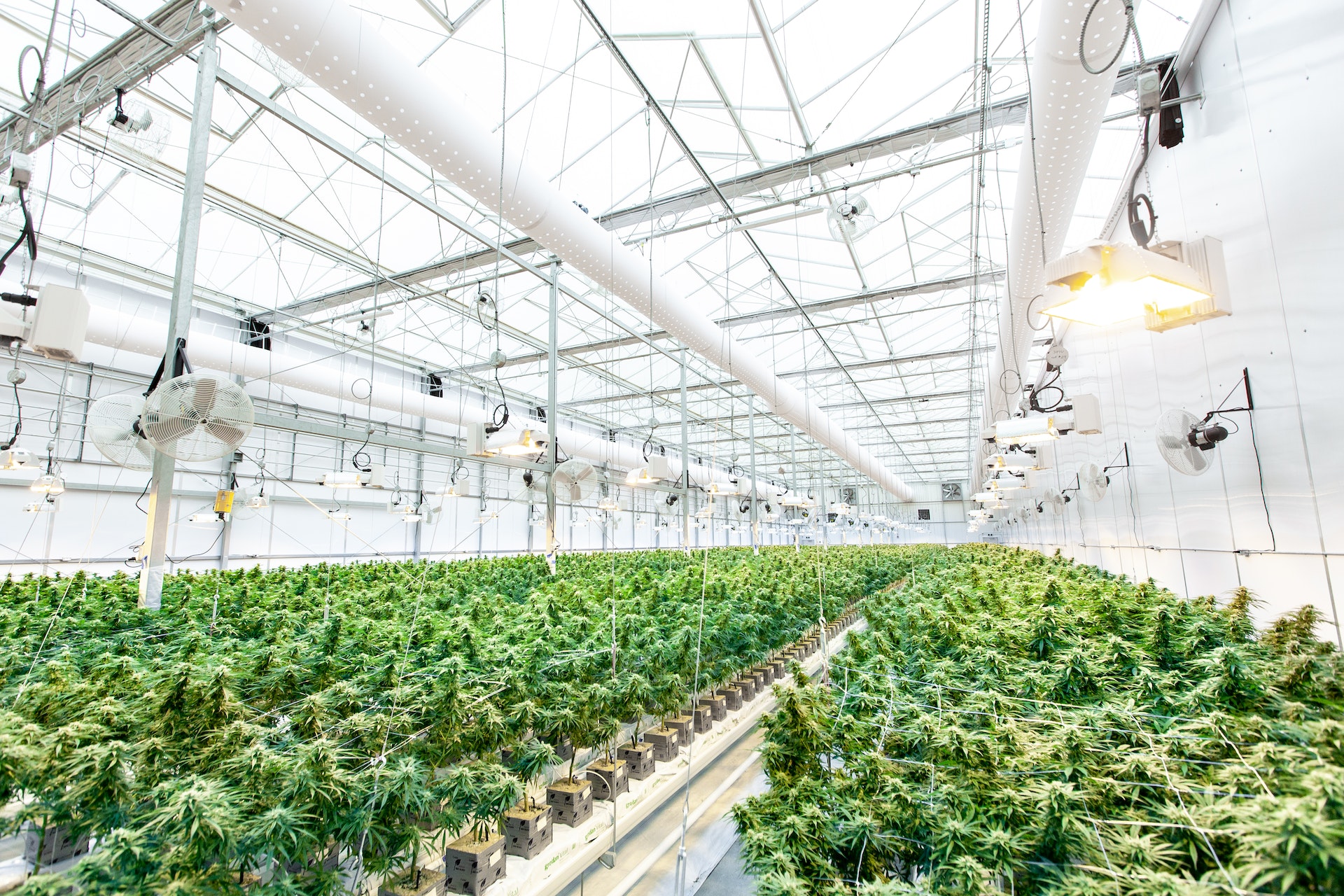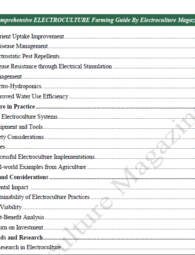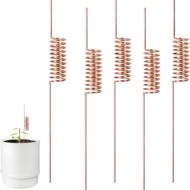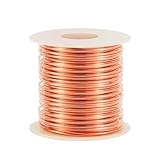Welcome to Electroculture Magazine, where we explore the fascinating world of innovative farming techniques. In our latest blog post, “Electroculture Farming of Cannabis,” we delve into the electrifying realm of cultivating cannabis using cutting-edge methods. Join us as we uncover the electrifying potential of this revolutionary approach to cannabis cultivation. Let’s spark your curiosity!
Introduction
Electroculture farming is the use of electrical energy to promote plant growth and increase productivity. Although electroculture techniques have been studied and experimented with for a variety of crops, their application to cannabis cultivation is limited and not extensively used.
Creating optimal growing conditions in cannabis cultivation typically involves controlling illumination, temperature, humidity, and nutrient levels. While electricity is unquestionably necessary to provide artificial lighting for cannabis cultivation indoors, electroculture techniques concentrate specifically on utilizing electrical energy in novel ways that may improve plant growth.
Some proponents of electroculture assert that electrical stimulation can improve root development, nutrient absorption, and plant growth as a whole. Using low-level electrical currents or magnetic fields in the soil or around the root zone of a plant could theoretically stimulate root growth, increase nutrient absorption, and enhance plant health as a whole.
Electroculture Farming of Cannabis involves the application of electrical currents to enhance plant growth and productivity. This innovative technique has gained popularity among cannabis cultivators seeking to maximize yields and improve crop quality. By utilizing principles of electrostimulation, electroculture farming aims to stimulate plant metabolism, increase nutrient uptake, and boost overall plant health.
Key Elements of Electroculture Farming:
- Electrostimulation: Through the application of carefully controlled electrical currents, plants can be encouraged to grow more vigorously and produce higher yields.
- Nutrient Uptake: Electrical stimulation can enhance the plant’s ability to absorb essential nutrients from the soil, leading to improved growth and development.
- Root Development: Electroculture techniques can stimulate root growth, resulting in healthier and more robust root systems that support increased nutrient uptake and plant stability.
- Disease Resistance: By promoting overall plant health, electroculture farming can help cannabis plants resist common diseases and pests, reducing the need for chemical interventions.
Electroculture Farming of Cannabis represents a cutting-edge approach to cultivation, offering growers a sustainable and effective method for maximizing yields and achieving healthier, more productive plants. By harnessing the power of electricity, cultivators can unlock the full potential of their cannabis crops and elevate their farming practices to new heights.
Learn All About Electroculture, Buy Our Handcrafted eBook Now…
Steps of Electroculture Farming of Cannabis
Here are the major steps of electroculture farming of cannabis:
- Choose the right electroculture device: There are a number of different electroculture devices available, so it is important to choose one that is right for your needs. Some devices are designed for indoor use, while others are designed for outdoor use. Some devices are designed for small-scale growers, while others are designed for large-scale growers.
- Set up the electroculture device: Once you have chosen an electroculture device, you will need to set it up according to the manufacturer’s instructions. This may involve placing the device in the soil near your plants, connecting the device to a power source, and adjusting the settings on the device.
- Run the electroculture device: Once the electroculture device is set up, you can start running it. The amount of time you run the device will vary depending on the device you are using. Some devices recommend running the device for 24 hours a day, while others recommend running the device for 12 hours a day.
- Monitor your plants: It is important to monitor your plants closely while you are using electroculture. This will help you to identify any problems early on. If you notice any problems, you may need to adjust the settings on the electroculture device or stop using the device altogether.
- Harvest your plants: Once your plants are ready to harvest, you can harvest them as usual. Electroculture may help to increase the yield and quality of your cannabis crop.
However, more research is needed to confirm the benefits of electroculture. Some experts believe that the effects of electroculture are too small to be significant. Others believe that the benefits of electroculture are only seen in certain conditions.
If you are interested in trying electroculture, there are a few things you need to do. First, you need to purchase an electroculture device. There are a number of different devices available, so you will need to choose one that is right for you. Second, you need to set up the device according to the manufacturer’s instructions. Third, you need to place the device in the soil near your plants.
Once you have set up the device, you can start using it. You will need to run the current for a certain amount of time each day. The amount of time will vary depending on the device you are using.
It is important to note that electroculture is not a miracle cure. It will not make your plants grow overnight. However, it can help to improve plant growth over time.
Benefits of Electroculture Farming of cannabis
Here are some of the benefits of electroculture farming of cannabis:
- Increased yields: Electroculture can help to increase the yield of cannabis plants. One study found that plants grown with electrical currents had a 30% increase in yield.
- Improved resistance to pests and diseases: Electroculture can help to improve the resistance of cannabis plants to pests and diseases. One study found that plants grown in a magnetic field were more resistant to spider mites.
- Faster growth: Electroculture can help cannabis plants to grow faster. One study found that plants grown with electrical currents were ready for harvest 10 days earlier than control plants.
- Healthier plants: Electroculture can help to produce healthier cannabis plants. One study found that plants grown with electrical currents had a higher chlorophyll content and were less susceptible to stress.
It’s important to note that electroculture farming is still an emerging field, and its application to cannabis farming may require further research and experimentation. Consult with experts in the field, such as agronomists, horticulturists, or researchers familiar with electroculture, to gain additional insights and guidance specific to cannabis cultivation.
Top 10 Electroculture Books from Amazon..
Last update on 2025-04-10 / Affiliate links / Images from Amazon Product Advertising API
Drawbacks of Electroculture Farming of Cannabis
Here are some of the drawbacks of electroculture farming of cannabis:
- Expensive equipment: Electroculture equipment can be expensive. However, the cost of the equipment may be offset by the increased yields and improved quality of the cannabis crop.
- Requires specialized knowledge: Electroculture is a complex process and requires specialized knowledge. If you are not familiar with electroculture, you may want to consult with a professional before trying it.
- Not all plants respond to electroculture: Not all plants respond to electroculture in the same way. Some plants may show no benefits, while others may show significant benefits.
If you are considering using electroculture to grow cannabis, it is important to weigh the benefits and drawbacks carefully. If you are looking for a way to improve the quality and quantity of your cannabis crop, electroculture may be a good option for you. However, if you are not willing to invest in the equipment and time required, electroculture may not be the right choice for you.
Buy All Necessary ELECTROCTURE TOOLS by Clicking Below...
Choosing the Right Electrical Equipment for Optimized Yields
When implementing electroculture farming techniques to maximize cannabis yields, selecting the appropriate electrical equipment is crucial for success. Here are some key factors to consider when choosing electrical equipment for Electroculture Farming of Cannabis:
- LED Grow Lights: Opt for high-quality LED grow lights that provide the specific spectrum of light needed for cannabis growth. LED lights are energy-efficient and produce less heat, creating a more controlled environment for plants.
- Timers and Controllers: Use timers and controllers to automate the lighting and irrigation systems. This ensures that plants receive the right amount of light and water at the optimal times, promoting healthy growth.
- HVAC Systems: Invest in HVAC systems to regulate temperature and humidity levels in the growing space. Proper climate control is essential for cannabis plants to thrive and maximize yields.
- Power Supply: Ensure a reliable power supply to prevent interruptions in lighting or ventilation systems. Consider backup generators or uninterruptible power supply (UPS) units to safeguard against power outages.
- Light Meters: Use light meters to measure the intensity of light reaching the plants. This information helps adjust the height and placement of grow lights for optimal light exposure.
- Carbon Dioxide (CO2) Controllers: Implement CO2 controllers to maintain the ideal levels of carbon dioxide in the growing environment. Higher CO2 levels can enhance plant growth and increase yields.
Selecting the right electrical equipment tailored to the specific needs of cannabis plants can significantly impact the success of Electroculture Farming of Cannabis. By investing in high-quality equipment and ensuring proper installation and maintenance, growers can create an optimal environment for cannabis cultivation and achieve maximum yields.
Optimizing Light and Nutrient Frequencies
In electoculture farming, optimizing light and nutrient frequencies is crucial for maximizing cannabis yields. By utilizing electroculture techniques, growers can fine-tune the electromagnetic frequencies applied to their plants to enhance growth and productivity. Here are some key points to consider when optimizing light and nutrient frequencies with electoculture:
- Understanding Plant Reactions: Plants respond differently to varying light and nutrient frequencies. Electroculture allows growers to adjust these frequencies to stimulate specific plant responses, such as increased photosynthesis, nutrient uptake, and overall health.
- Balancing Light Intensity: Electroculture enables growers to control the intensity of light reaching the plants. By adjusting the light frequencies, growers can optimize photosynthesis and flower production, leading to healthier and more abundant cannabis yields.
- Enhancing Nutrient Absorption: Electroculture techniques can improve nutrient absorption by enhancing root development and nutrient uptake efficiency. Through the application of specific frequencies, growers can promote better nutrient assimilation, resulting in stronger, more resilient plants.
- Customizing Growth Conditions: With electoculture, growers have the ability to customize the growth conditions according to the specific needs of cannabis plants. By fine-tuning light and nutrient frequencies, growers can create an optimal environment that promotes maximum yield potential.
- Maximizing Yield Potential: By optimizing light and nutrient frequencies with electroculture, growers can achieve higher yields of top-quality cannabis. The precise control over growing conditions provided by electoculture techniques helps ensure that plants receive the ideal balance of light and nutrients for optimal growth and productivity.
Incorporating electroculture into cannabis cultivation practices can unlock the full potential of plants by optimizing light and nutrient frequencies, ultimately leading to increased yields and improved quality.
Get Our Ultimate Electrocuture Video Course…

Managing Electrical Safety and Compliance in Cannabis Farming
When it comes to Electroculture Farming of Cannabis, managing electrical safety and ensuring compliance with regulations is paramount. Here are some essential tips to keep in mind:
- Electrical Safety Measures:
- Regularly inspect all electrical equipment to ensure they are in good working condition.
- Implement GFCI outlets to prevent electrical shock.
- Properly ground all electrical systems to reduce the risk of fire.
- Train employees on electrical safety protocols and procedures.
- Compliance with Regulations:
- Familiarize yourself with local and state electrical codes and regulations that apply to cannabis farming.
- Ensure that all electrical work is carried out by licensed professionals.
- Keep detailed records of all electrical maintenance and repairs for compliance purposes.
- Fire Safety:
- Install smoke alarms and fire extinguishers in key areas of the facility.
- Develop and regularly practice fire evacuation drills with all employees.
- Have a comprehensive fire safety plan in place, including emergency contact information.
- Emergency Response:
- Create an emergency response plan that includes procedures for dealing with electrical accidents.
- Keep an emergency kit with necessary supplies in case of a power outage or other electrical emergencies.
To maximize cannabis yields, it is essential to prioritize electrical safety and compliance. By taking proactive measures and staying up to date with regulations, cannabis farmers can ensure a safe working environment for employees and protect their valuable crops from potential electrical hazards.
Monitoring and Adjusting Electrode Placement
- Regularly monitor the health and growth of your cannabis plants to ensure they are responding positively to the electroculture technique.
- Watch for any signs of stress or damage that may be attributed to improper electrode placement.
- Adjust the positioning of the electrodes if there are any areas of the plant that seem to be underperforming or showing signs of distress.
- Utilize conductivity meters to measure the electrical conductivity of the soil and make adjustments to electrode placement based on these readings.
- Keep a log of any changes made to the electrode placement and track the corresponding impact on plant growth and yield.
- Consult with experts or other farmers experienced in electroculture techniques for advice on optimizing electrode placement for cannabis cultivation.
- Experiment with different electrode configurations to find the most effective setup for maximizing cannabis yields in your specific growing environment.
- Be patient and methodical in your approach to monitoring and adjusting electrode placement, as it may take time to see significant improvements in plant growth and yield.
“Regular monitoring and strategic adjustments to electrode placement are crucial to ensuring optimal results with electroculture farming techniques.”
Utilizing Electromagnetic Fields to Enhance Plant Growth
Electroculture, a farming technique based on using electromagnetic fields to stimulate plant growth, has shown promising results in maximizing cannabis yields. By harnessing the power of electromagnetic waves, growers can enhance various stages of the plant’s life cycle, leading to healthier plants and increased production.
Key aspects of utilizing electromagnetic fields for plant growth include:
- Root Development: Electromagnetic fields can promote root growth by increasing cell division and nutrient uptake. This results in stronger root systems that can support larger plants and improve overall yield.
- Photosynthesis Enhancement: By exposing plants to specific frequencies of electromagnetic waves, photosynthetic activity can be boosted. This leads to increased production of sugars and energy for the plant to support growth and flower development.
- Stress Reduction: Electromagnetic fields have been found to reduce stress in plants caused by environmental factors such as pests, diseases, or harsh weather conditions. This can result in healthier plants that are more resilient to external threats.
- Flowering and Fruit Development: Through targeted exposure to electromagnetic fields during the flowering stage, cannabis plants can experience accelerated flower development and increased bud formation. This can lead to higher-quality yields with potent cannabinoids.
- Overall Plant Health: By incorporating electromagnetic field stimulation into a comprehensive cultivation strategy, growers can improve the overall health and vitality of their cannabis plants. This can result in robust growth, better resistance to diseases, and ultimately, higher yields of premium-quality cannabis.
Electroculture farming techniques offer a promising avenue for maximizing cannabis yields through the strategic use of electromagnetic fields to enhance plant growth at various stages of development.
Review This Electroculture Copper Antennas for DIY.
Last update on 2025-04-10 / Affiliate links / Images from Amazon Product Advertising API
Implementing Electrolysis for Improved Nutrient Absorption
Integrating electrolysis into Electroculture Farming of Cannabis practices can significantly enhance nutrient absorption and ultimately boost yields. By leveraging electrolysis, farmers can optimize nutrient delivery to plants, leading to improved growth and overall health. Here are key points to consider when implementing electrolysis for enhanced nutrient absorption:
- Understanding Electrolysis: Electrolysis involves the decomposition of water into oxygen and hydrogen gas through the application of an electric current. This process creates an enriched environment that facilitates nutrient uptake by plants.
- Enhanced Nutrient Absorption: Electrolysis helps break down water molecules into ions, making essential nutrients more accessible to plant roots. This increased nutrient availability can result in accelerated growth and higher crop yields.
- pH Regulation: Electrolysis can also play a crucial role in regulating the pH levels of the nutrient solution. By adjusting the acidity or alkalinity of the water through electrolysis, growers can create an optimal environment for nutrient uptake.
- Oxygenation Benefits: The oxygen released during electrolysis can improve oxygen levels in the root zone, promoting healthier root development and enhancing nutrient absorption efficiency.
- Electrolysis Systems: Implementing electrolysis systems in hydroponic setups or traditional soil-based cultivation can offer growers a versatile tool to fine-tune nutrient delivery and maximize plant growth potential.
- Environmental Considerations: While electrolysis can offer substantial benefits in terms of nutrient absorption, growers should also be mindful of energy consumption and the environmental impact of implementing such systems.
By harnessing the power of electrolysis, cannabis cultivators can revolutionize their farming techniques, leading to healthier plants, increased yields, and overall improved crop quality.
Relationship Between Electrical Stimulation and Yield Quantity
- Electrical stimulation has shown promising results in maximizing cannabis yields through the process of electroculture.
- The application of electrical currents to the soil enhances nutrient uptake and overall plant growth, leading to increased yield quantity.
- Studies have demonstrated that specific frequencies and intensities of electrical stimulation can further optimize plant growth and productivity.
- The relationship between electrical stimulation and yield quantity is intricate, influenced by factors such as current strength, duration of application, and frequency of pulses.
- Electroculture techniques offer a sustainable and efficient way to boost crop yields by harnessing the power of electrical energy.
- Farmers can adjust the parameters of electrical stimulation based on crop type and growth stage to maximize yield quantity effectively.
- By understanding the correlation between electrical stimulation and yield quantity, growers can fine-tune their electroculture practices for optimal results.
- Implementing electrical stimulation in cannabis cultivation can not only increase yield quantity but also improve the overall quality of the harvest.
- Continued research and experimentation are essential to uncovering the full potential of electrical stimulation in enhancing crop yields for sustainable farming practices.
Enhancing Terpene Production Through Electroculture Techniques
Electricity plays a crucial role in boosting terpene production in cannabis plants through electroculture techniques. By applying controlled electrical currents to the plants, growers can stimulate metabolic processes, leading to increased terpene synthesis. This method has shown promising results in enhancing the aroma, flavor, and overall quality of the cannabis product.
- Increased Terpene Profiles: Electroculture techniques can significantly elevate the terpene profiles of cannabis plants. Terpenes are organic compounds responsible for the unique scent and flavor of each strain. By optimizing electroculture methods, growers can achieve a more diverse and potent terpene profile in their plants.
- Improved Aroma and Flavor: The application of electrical currents can influence the production of specific terpenes, contributing to a richer and more pronounced aroma and flavor in cannabis buds. This can enhance the overall consumer experience and satisfaction with the product.
- Enhanced Therapeutic Benefits: Terpenes also play a crucial role in the therapeutic effects of cannabis. By utilizing electroculture techniques to boost terpene levels, growers can potentially enhance the medicinal properties of their crops, offering consumers a more potent and effective product.
- Optimized Growing Conditions: Electroculture methods can fine-tune growing conditions by regulating the uptake of nutrients and water in the plants. This can result in improved growth rates, higher yields, and healthier plants overall, ultimately leading to a more successful cultivation process.
Incorporating electroculture farming of cannabis can revolutionize the way growers cultivate and harvest their crops, offering a more efficient and effective means of maximizing terpene production and overall plant quality.
Challenges in Electroculture Farming of Cannabis
- Electroculture farming may face challenges like erratic weather conditions, technical maintenance, and initial setup costs.
- Farmers can address weather-related challenges by incorporating backup systems for protection against unforeseen conditions.
- To tackle technical maintenance issues, regular equipment checks and maintenance schedules should be established.
- Opting for energy-efficient systems can help reduce initial setup costs and make electroculture more cost-effective in the long run.
- Training programs and resources can assist farmers in understanding and implementing electroculture techniques effectively.
- Collaborating with experts in the field can provide valuable insights and guidance on troubleshooting any challenges that may arise.
- Integrating automation and remote monitoring systems can streamline farming operations and improve overall efficiency.
- Utilizing data analytics and precision farming techniques can optimize crop growth and yield potential in electroculture practices.
- Continuous research and innovation in electroculture farming of cannabis will contribute to overcoming challenges and improving sustainability in crop production.
Maximizing Crop Yields Through Data Analysis and Monitoring
Data analysis plays a crucial role in maximizing crop yields, including cannabis cultivation. By leveraging data collected from various sources such as soil sensors, weather stations, and crop monitoring systems, farmers can make informed decisions to optimize growing conditions. Through careful analysis of this data, patterns and trends can be identified, allowing for adjustments to be made in real-time to ensure that plants are receiving the optimal amount of nutrients, water, and light.
Monitoring is another essential aspect of maximizing crop yields. By regularly monitoring plant growth, health, and environmental conditions, farmers can spot potential issues early on and take corrective actions to prevent crop loss. This proactive approach helps to maintain the overall health of the plants and ensures that they reach their full potential in terms of yield and quality.
Implementing data analysis and monitoring techniques in cannabis cultivation not only increases yields but also contributes to sustainability. By reducing waste, improving resource efficiency, and minimizing the use of chemicals, farmers can cultivate cannabis in a more environmentally friendly manner. Additionally, by constantly monitoring and analyzing data, growers can experiment with different techniques and strategies to continually improve their processes and achieve even higher yields in the future.
In summary, data analysis and monitoring are essential tools for maximizing crop yields in cannabis cultivation. By harnessing the power of data, farmers can make more informed decisions, optimize growing conditions, and ultimately increase both the quantity and quality of their harvest.
Review This Electroculture Equipments For DIY Experiemnts..
Last update on 2025-04-10 / Affiliate links / Images from Amazon Product Advertising API
Experimenting with Different Voltage Levels for Maximum Impact
When it comes to maximizing cannabis yields through electroculture farming, experimenting with different voltage levels is crucial. By varying the voltage applied to the plants, growers can observe the effects on plant growth and overall yield. Here are some key points to consider when experimenting with different voltage levels:
- Low Voltage: Initially starting with low voltage levels allows growers to assess how the plants respond without causing potential damage. Low voltage levels can stimulate root growth and enhance nutrient uptake, leading to improved overall plant health.
- Medium Voltage: Increasing the voltage to a moderate level can accelerate plant growth and increase biomass production. This level of voltage can boost photosynthesis and nutrient transportation within the plant, resulting in lusher foliage and potentially higher yields.
- High Voltage: While high voltage levels should be approached with caution to prevent harm to the plants, they can trigger significant growth responses. High voltage can stimulate cell division, increase flowering sites, and ultimately enhance bud development, potentially leading to a substantial increase in yield.
However, it is essential to closely monitor the plants’ response to different voltage levels and make adjustments accordingly. Observing for any signs of stress or damage such as wilting, discoloration, or stunted growth is paramount in determining the optimal voltage level for maximum impact on cannabis yields.
In conclusion, experimenting with different voltage levels in electroculture farming can offer valuable insights into how to achieve the best results in terms of plant growth and yield. By carefully adjusting voltage levels and closely observing plant responses, growers can fine-tune their approach to optimize cannabis production effectively.
Incorporating Electroculture into Organic Cannabis Farming Practices
- Electroculture can be seamlessly integrated into organic cannabis farming practices to enhance yields and promote sustainability.
- By utilizing electroculture techniques, cannabis farmers can stimulate plant growth, improve nutrient uptake, and boost overall crop health.
- One of the key benefits of incorporating electroculture is the reduction of dependence on traditional fertilizers and pesticides, leading to a more environmentally friendly cultivation process.
- Electroculture works by applying low-voltage electrical currents to the soil, which encourages microbial activity, improves soil structure, and increases plant resilience to pests and diseases.
- This method can be particularly advantageous for organic cannabis growers looking to optimize their yield potential while maintaining adherence to organic farming principles.
- Farmers can implement electroculture through the use of specialized equipment designed to deliver precise electrical stimulation to the soil, ensuring optimal results without compromising the organic integrity of the crop.
- As a sustainable farming technique, electroculture offers organic cannabis producers an innovative way to enhance crop productivity and quality while minimizing the environmental impact of their operations.
Future of Electroculture Farming of Cannabis
- Electroculture involves the application of low-level electrical currents to plants to promote growth, enhance nutrient absorption, and increase overall yield.
- Research suggests that electroculture can stimulate plant metabolism, leading to improved photosynthesis, nutrient uptake, and plant development.
- In cannabis cultivation, electroculture has the potential to optimize plant growth cycles, resulting in healthier plants with higher cannabinoid content.
- The use of electroculture in cannabis farming may offer a sustainable and environmentally friendly method for increasing yields while reducing the need for chemical fertilizers.
- Electro-stimulation techniques can be customized to meet the specific needs of cannabis plants at different stages of growth, maximizing their potential for optimum yield.
- Future advancements in electroculture farming of cannabis technology could lead to further innovations in cannabis cultivation, such as increased resistance to pests and diseases.
- As the cannabis industry continues to evolve, incorporating electroculture techniques into cultivation practices may become more widespread, revolutionizing the way cannabis is grown and harvested.
- Exploring the potential of electroculture in cannabis cultivation holds promise for not only maximizing yields but also promoting more efficient and sustainable farming practices in the cannabis industry.
Case Studies: Successful Implementation of Electroculture Techniques
- Case Study 1: Electroculture Farming of Cannabis
- Location: Cannabis farm in Northern California
- Technique Used: Electrostatic induction
- Results: Increased trichome production by 20%, leading to higher THC levels in plants
- Farmer’s Feedback: “Electroculture has been a game-changer for us. We’ve seen a noticeable difference in the potency of our cannabis since implementing these techniques.”
- Case Study 2: Electroculture Farming of Cannabis
- Location: Indoor cultivation facility in Colorado
- Technique Used: Electromagnetic stimulation
- Results: Improved plant growth rate by 30%, resulting in quicker harvest cycles
- Grower’s Testimony: “Integrating electroculture methods into our grow operation has not only boosted our yields but also saved us time and resources. It’s a sustainable approach that’s definitely worth the investment.”
- Case Study 3: Electroculture Farming of Cannabis
- Location: Greenhouse hemp farm in Oregon
- Technique Used: Direct current application
- Results: Enhanced terpene profiles in plants, leading to more flavorful and aromatic hemp flowers
- Farmer’s Perspective: “The ability to fine-tune the electrification process has allowed us to tailor our crops’ characteristics to meet market demands for premium quality hemp products. Electroculture has truly set our farm apart in a competitive industry.”
These case studies highlight the tangible benefits of incorporating electroculture techniques into cannabis cultivation practices. By harnessing principles of electricity and plant biology, growers can optimize their yields, improve crop quality, and ultimately elevate the standard of their harvests.
The Environmental Impact
- Electroculture farming of cannabis practices have the potential to reduce the environmental impact of traditional agriculture methods.
- By using low-voltage electrical currents to stimulate plant growth, electroculture techniques can increase crop yields without the need for chemical fertilizers or pesticides.
- This can help to reduce the amount of harmful chemicals that are released into the environment and can potentially lower the carbon footprint of farming operations.
- Additionally, electroculture farming can also help to conserve water by promoting more efficient use of irrigation systems.
- This can be especially beneficial in regions where water scarcity is a significant concern.
- Overall, electroculture farming practices have the potential to create a more sustainable and environmentally friendly approach to agriculture.
Some Best Copper Wire For Electroculture
Last update on 2025-05-01 / Affiliate links / Images from Amazon Product Advertising API
Legal and Regulatory for Electroculture Farming of Cannabis
- When implementing Electroculture Farming of cannabis , growers must be aware of the legal and regulatory considerations that come with this innovative farming method.
- It is essential for growers to understand the laws and regulations specific to their region regarding the use of electroculture in cannabis farming.
- Regulations may vary from state to state or country to country, so it is crucial to stay up-to-date with the legal landscape.
- Some jurisdictions may have restrictions or guidelines in place for the use of electroculture due to concerns about safety, environmental impact, or product quality.
- Growers should ensure that they are compliant with all applicable regulations to avoid any legal issues that could arise from utilizing electroculture techniques.
- Consulting with legal professionals or industry experts can help growers navigate the legal requirements and ensure they are in full compliance.
- Additionally, staying informed about any changes in regulations or best practices for electroculture in the cannabis industry is essential for maintaining a successful and sustainable operation.
- By understanding and adhering to legal and regulatory guidelines, growers can harness the benefits of electroculture while staying within the bounds of the law.
Final Thoughts
Implementing Electroculture Farming of Cannabis cultivation can significantly enhance yields by stimulating plant growth and increasing nutrient absorption. This innovative method harnesses the power of electricity to promote root development and overall plant health, creating a conducive electric field that supports photosynthesis and nutrient uptake, ultimately leading to bigger, more robust cannabis plants.
The use of electroculture can also improve the efficiency of water and nutrient delivery, ensuring optimal growth conditions for cannabis. Farmers adopting electroculture techniques may experience faster growth rates, higher yields, and enhanced cannabinoid production in their cannabis crops. However, it is crucial to carefully monitor and regulate the electrical inputs to prevent any negative effects on plant health and ensure safety during implementation.
As the cannabis industry evolves, electroculture presents a promising method for maximizing crop yield and quality. Incorporating electroculture into modern farming practices shows great potential for sustainable and efficient cannabis production, offering growers a means to optimize their yields and cultivate high-quality crops efficiently.






































































